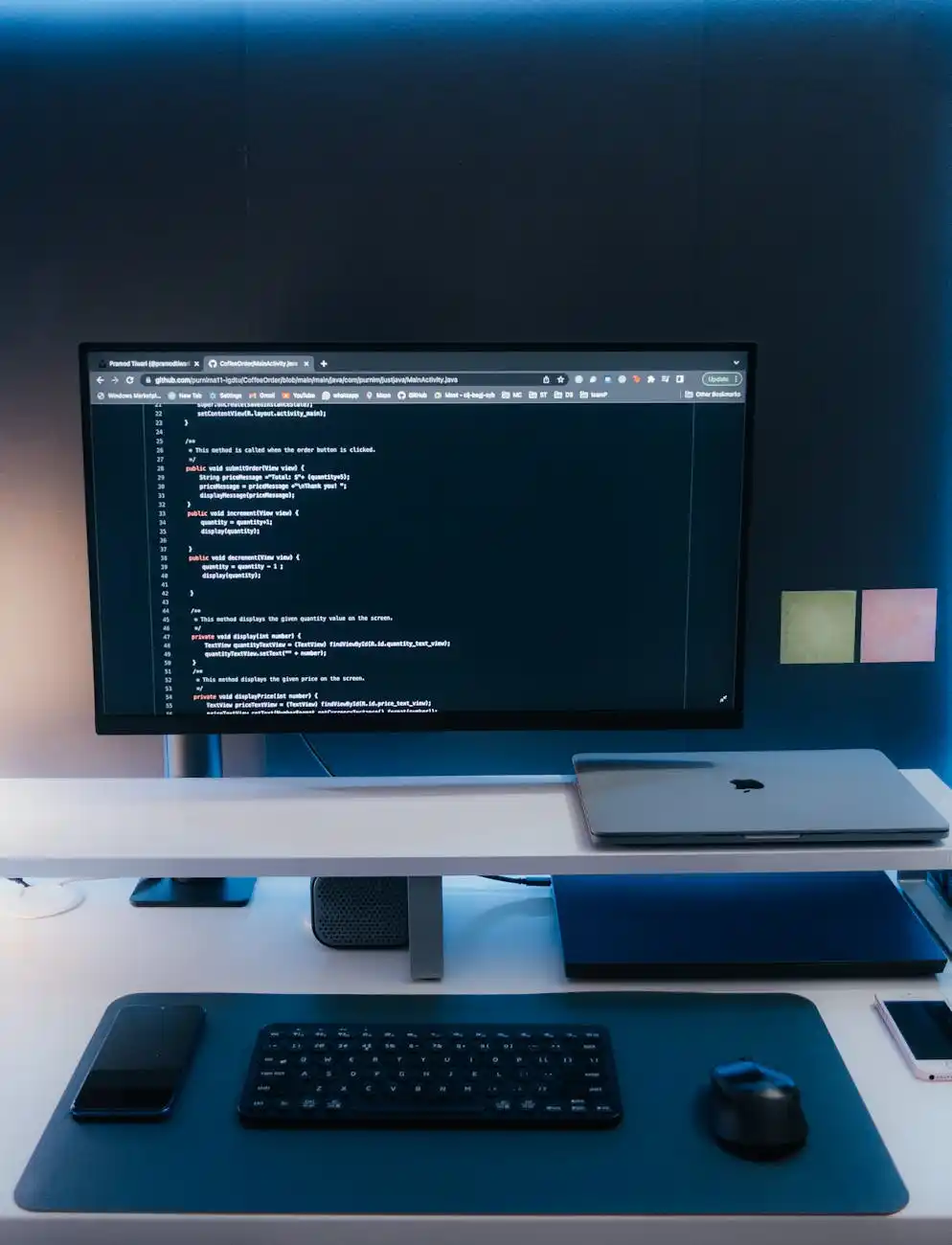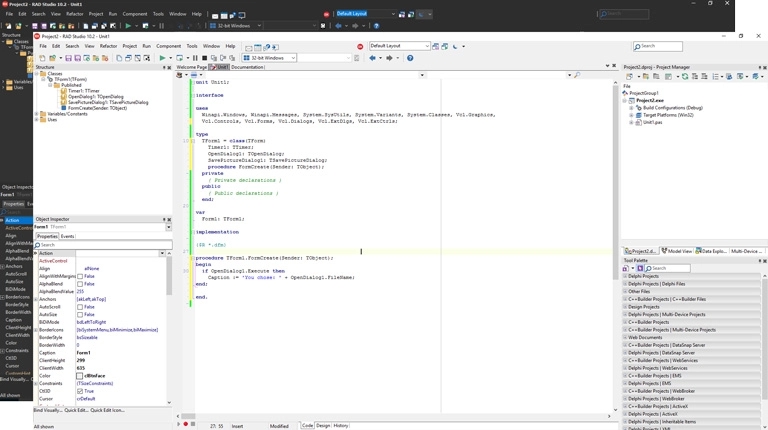Introduction
Ever spent hours deciphering someone else’s code, feeling like you’re lost in a jungle of cryptic symbols? Clean code is the antidote to this frustration. It’s well-organized, readable code that makes your life (and the lives of your fellow programmers) much easier.
This article is your guide to mastering clean code, specifically aimed at students, self-taught programmers, and recent graduates. Whether you’re just starting your coding journey or taking your first steps into the professional world, this guide will equip you with the knowledge and best practices to write clean, maintainable code.
We won’t delve into specific coding examples here, but we’ll provide a roadmap for understanding the principles of clean code. We’ll explore the benefits of clean code, from smoother collaboration to easier debugging. We’ll also discuss the difference between flexible guidelines and stricter rules, helping you strike the right balance for effective coding. Finally, we’ll address situations where clean code practices might need some adjustments, and how to navigate the challenges of working with legacy code. By the end, you’ll be well on your way to writing code that’s not just functional, but a joy to work with.
Origins of Clean Coding Principles
Clean code wasn’t born overnight. It’s the culmination of decades of experience by programmers facing the ever-growing complexity of software. Early software development often resulted in code that was difficult to understand and maintain, leading to frustration and errors.
The need for a more systematic approach to writing code became evident. Pioneering figures like Robert C. Martin (“Uncle Bob”) and others began to identify and codify best practices for code readability, maintainability, and efficiency. These ideas were influenced by various disciplines, including:
- Software Design: Principles like modularity and abstraction, emphasizing well-defined components with clear responsibilities.
- Readability: Techniques from technical writing, focusing on clear naming conventions, proper formatting, and commenting for better understanding.
- Maintainability: Strategies to ensure code can be easily modified and extended in the future, reducing technical debt.
The concept of clean code gained traction as software projects grew larger and more collaborative. The need to work effectively with code written by others became paramount. Clean code acts as a bridge between developers, facilitating communication and reducing errors introduced during maintenance.
While specific practices might evolve over time, the core principles of clean code remain essential for any programmer who wants to write code that stands the test of time.
Understanding Clean Code
Clean code isn’t just about aesthetics; it’s a philosophy that prioritizes readability, maintainability, and efficiency in your code. Imagine a well-organized kitchen where everything has its designated place and labels are clear. This is the essence of clean code. Your code should be easy to understand, not just for you now, but also for anyone who might interact with it in the future.
Defining Clean Code
Clean code embodies several key characteristics:
- Readability: Clean code prioritizes human understanding. It uses clear and concise variable and function names that accurately reflect their purpose. Proper indentation and spacing make the code visually appealing and easier to follow. Imagine code that reads like a well-written instruction manual, guiding the reader through the logic effortlessly.
- Maintainability: Clean code is future-proof. It’s designed to be easily modified and extended as requirements evolve. This involves techniques like modularity, where code is broken down into smaller, self-contained units. Well-structured code with minimal duplication allows for easier modification without unintended consequences.
- Efficiency: Clean code doesn’t sacrifice performance. While readability and maintainability are crucial, clean code should still execute efficiently. It avoids unnecessary complexity and strives for optimal resource utilization. However, in some situations, achieving peak performance might require slight deviations from clean code principles. We’ll explore this trade-off later.
Benefits of Clean Code
Clean code isn’t just a feel-good practice; it offers significant advantages for both individual developers and teams:
- Improved Collaboration: Clean code fosters better communication and collaboration between developers. When code is clear and well-documented, it’s easier for team members to understand each other’s work. Code reviews become smoother, allowing for faster identification and correction of potential issues.
Imagine two developers working on the same project. With clean code, they can readily grasp the logic and purpose of different modules, facilitating seamless integration of their contributions.
- Easier Debugging and Maintenance: Bugs and errors are inevitable in any software project. Clean code makes debugging a less time-consuming and frustrating experience. The clarity and structure of clean code allow developers to pinpoint the source of issues more quickly. Additionally, clean code is easier to maintain as new features and bug fixes are implemented.
Think of it like a well-organized toolbox. When each tool has its designated place, finding the right one for the job becomes effortless. Similarly, clean code allows developers to navigate through the codebase efficiently, leading to faster resolution of issues.
- Enhanced Scalability and Flexibility: Clean code is built to adapt and grow. The modular design of clean code allows for easier addition of new features and functionalities without compromising existing functionalities. Imagine a house built on a strong foundation. Clean code provides a solid foundation upon which you can build upon in the future, accommodating future growth and changes in requirements.
By following clean code principles, you write code that can scale effortlessly as your project evolves, saving time and resources in the long run.
In conclusion, clean code is an investment in the future of your software. It promotes collaboration, simplifies maintenance, and ensures your code can adapt to changing needs. By prioritizing clean code practices, you write code that is not only functional but also a joy to work with for yourself and your fellow developers.
Guidelines vs Rules
The world of clean code isn’t a rigid rulebook. It’s more like a well-marked trail with clear guidelines to follow, but also room for some exploration and adaptation. Here, we’ll delve into the distinction between guidelines and rules, helping you navigate the path towards clean code effectively.
Guidelines: The Flexible Compass of Clean Code
Guidelines are broad principles that provide direction for writing clean code. They offer a framework for best practices without dictating a one-size-fits-all approach. Here are some key aspects of guidelines:
- Flexibility: Guidelines are adaptable to different situations and project requirements. They encourage critical thinking and decision-making based on the specific context.
- Focus on “Why” over “How”: Guidelines often emphasize the underlying reasons for a particular practice. This understanding helps you make informed choices when faced with unique challenges.
Examples of Common Clean Code Guidelines:
- Meaningful Naming: Variable and function names should clearly reflect their purpose. Instead of using cryptic abbreviations like “x” or “temp”, use names like “customerName” or “calculateDiscount”.
- Proper Indentation: Consistent indentation visually represents the code’s structure, making it easier to follow the logic flow. Imagine a well-formatted paragraph where each level of hierarchy is clearly indicated by indentation.
- Single Responsibility Principle: Functions should have a single, well-defined purpose. This promotes modularity and makes code easier to understand, maintain, and reuse.
- KISS (Keep It Short and Simple): Strive for concise code that achieves the desired functionality without unnecessary complexity.
These are just a few examples, and the specific guidelines you follow might vary depending on your programming language, project requirements, and team conventions.
Rules: The Guardrails of Clean Coding
While guidelines provide flexibility, there are also some well-established rules that act as guardrails in clean coding. These rules are more rigid and often enforced by coding standards or linters (automated tools that check for code style violations).
- Strict Enforcement: Rules are typically black and white, with clear consequences for non-compliance. They ensure consistency and maintainability within a codebase.
Examples of Clean Code Rules:
- Line Length Limit: Maintaining a consistent line length improves readability. Many codebases enforce a maximum line length to prevent code from wrapping awkwardly across lines.
- Indentation Style: Some projects might have specific rules regarding indentation style (e.g., tabs vs. spaces, number of spaces per indent).
- Naming Conventions: Projects might have defined naming conventions for variables, functions, and classes. Following these conventions ensures consistency and clarity across the codebase.
Striking the Balance: Guidelines and Rules Working Together
The key to effective clean coding lies in striking the right balance between guidelines and rules. Here’s why:
- Flexibility for Innovation: Guidelines allow for adaptation and problem-solving specific to your project. This flexibility fosters creativity and innovation in coding solutions.
- Consistency for Collaboration: Rules ensure consistency in code style, making it easier for developers working on the same project to understand and collaborate effectively.
- Clarity through Understanding: By understanding the rationale behind both guidelines and rules, you can make informed decisions about when to follow them strictly and when to adapt based on the specific situation.
Imagine clean code practices as a map and compass for your coding journey. Guidelines provide the general direction, while rules act as specific landmarks to keep you on track. Understanding the “why” behind both allows you to navigate effectively and reach your coding destination.
Importance of Understanding the Rationale:
Understanding the reasons behind clean code practices is crucial for effective implementation.
- Meaningful Names: Clear names reduce the need for comments, making the code more self-documenting and easier to understand at a glance.
- Proper Indentation: Consistent indentation visually represents the nesting of code blocks, aiding in comprehension of the logic flow.
- Single Responsibility Principle: Functions with a single purpose are easier to test, reuse, and maintain, making the codebase more robust.
- Line Length Limit: Shorter lines of code are easier to read on most screens and reduce the risk of errors caused by line wrapping.
By grasping the “why” behind clean code practices, you can not only follow them effectively but also make informed decisions when encountering situations that might require some adaptation.
When It’s Okay to Bend the Rules
The principles of clean code are powerful tools, but the real world of software development can sometimes present situations where strict adherence might not be the optimal solution. Here, we’ll explore scenarios where it’s okay to make calculated adjustments to clean code practices while still prioritizing code quality.
Performance Considerations: Balancing Cleanness with Efficiency
Clean code strives for readability and maintainability, but sometimes, raw performance takes center stage. Here’s how to navigate this trade-off:
- Measure First, Optimize Later: Don’t prematurely sacrifice clean code for performance concerns. Measure your code’s actual performance and identify bottlenecks before making changes. You might be surprised to find that clean code performs adequately for your needs.
- Targeted Optimization: If performance optimization is necessary, focus on specific areas that are causing bottlenecks. Optimize those sections while maintaining clean code principles in the rest of the codebase.
Examples of When to Prioritize Performance:
- Real-time applications: In situations where response times are critical (e.g., online games, trading platforms), slight deviations from clean code principles might be necessary to achieve optimal performance. Here, clear documentation becomes even more important to explain the reasoning behind these choices.
- Resource-constrained environments: When working with limited memory or processing power (e.g., embedded systems, mobile apps), some clean code practices might introduce unnecessary overhead. In such cases, carefully consider alternative approaches that balance efficiency with maintainability.
Remember, the goal is to find the sweet spot between clean code and performance that best suits your specific needs. Don’t throw away clean code principles entirely; instead, make targeted adjustments based on concrete performance requirements.
Legacy Code Integration: Working with the Past
Inheriting or integrating with existing codebases (legacy code) can be a challenge for clean code practices. Legacy code might be poorly documented, lack proper structure, and deviate from current best practices. Here’s how to approach this situation:
- Challenges of Legacy Code:
- Readability: Legacy code might be difficult to understand due to poor naming conventions, lack of comments, and outdated coding styles.
- Maintainability: Adding new features or fixing bugs in legacy code can be time-consuming and error-prone due to its complexity.
- Integration: Integrating clean, well-structured code with a messy legacy system can be challenging and introduce potential compatibility issues.
- Strategies for Refactoring Legacy Code:
- Gradual Improvement: Refactoring legacy code is a marathon, not a sprint. Start by identifying the most critical areas for improvement and gradually refactor them while maintaining functionality.
- Focus on Maintainability: Even if you can’t completely rewrite everything, prioritize making the code more maintainable by improving naming conventions, adding comments, and breaking down complex functions into smaller, more manageable units.
- Testing is Key: Thorough testing is crucial when refactoring legacy code. Ensure that your changes don’t introduce unintended side effects.
Understanding when and how to adapt them to real-world scenarios is essential. By prioritizing performance in critical situations and taking a measured approach to legacy code integration, you can ensure your code remains functional, maintainable, and efficient over time.
The Clean Code Journey is Lifelong
Throughout this article, we’ve explored the world of clean code, emphasizing its importance for writing maintainable, readable, and efficient software. Clean code isn’t just about aesthetics; it’s a philosophy that empowers you to create code that stands the test of time, fostering collaboration and simplifying future modifications.
Here’s a quick reminder of the key benefits you reap by embracing clean code practices:
- Effortless Collaboration: Clean code fosters clear communication between developers. Team members can easily understand each other’s work, leading to smoother code reviews and faster project completion.
- Reduced Maintenance Headaches: Clean code is easier to maintain and modify as requirements evolve. Well-structured, documented code allows for quicker bug fixes and feature implementation without unintended consequences.
- Future-Proofed Software: Clean code adapts to change. The modular design makes it easier to scale the codebase and integrate new functionalities as your project grows.
By adhering to clean code principles, you invest in the long-term health and maintainability of your software. This not only benefits you but also anyone who interacts with your code in the future.
Embrace Continuous Learning
The world of software development is constantly evolving. New languages, frameworks, and best practices emerge all the time. As an aspiring developer, it’s crucial to cultivate a growth mindset and embrace continuous learning.
Here are some resources to keep you on your clean code journey:
- Books: Several excellent books delve deep into clean code practices, such as “Clean Code: A Handbook of Agile Software Craftsmanship” by Robert C. Martin and “Clean Architecture: A Craftsman’s Guide to Software Structure” by Robert C. Martin.
- Online Courses: Numerous online platforms offer courses and tutorials on clean code principles and best practices. Explore platforms like Coursera, Udemy, and edX for in-depth learning opportunities.
- Coding Standards Documents: Many programming languages have established coding standards documents that outline best practices for clean code. Familiarize yourself with these guidelines for the languages you use.
By actively seeking out new knowledge and incorporating it into your coding practices, you’ll continuously refine your skills and become a more proficient clean coder.
Final Words: Mastering the Art of Clean Code
Mastering clean code is a journey, not a destination. It takes dedication, practice, and a willingness to learn. Here are some final words of advice as you embark on this path:
- Start Small, Think Big: Begin by applying clean code principles to smaller projects or specific parts of your codebase. Gradually expand your clean code practices as you gain confidence.
- Focus on the “Why”: Don’t just follow rules blindly. Understand the rationale behind clean code principles. This deeper understanding will help you make informed decisions when adapting these principles to different situations.
- Readability is King: Always prioritize code that is easy for humans to understand, both for yourself and your fellow developers.
- Practice Makes Perfect: The more you write clean code, the more ingrained these practices will become in your workflow.
- Embrace the Community: Connect with other developers who share your passion for clean code. Online forums, meetups, and developer communities offer valuable opportunities to learn from each other and share your experiences.
Remember, clean code isn’t just about writing code; it’s about expressing your ideas clearly and efficiently. By embracing these principles, you’ll not only enhance your software development skills but also cultivate a deeper understanding of the art and science of coding.




Leave a comment